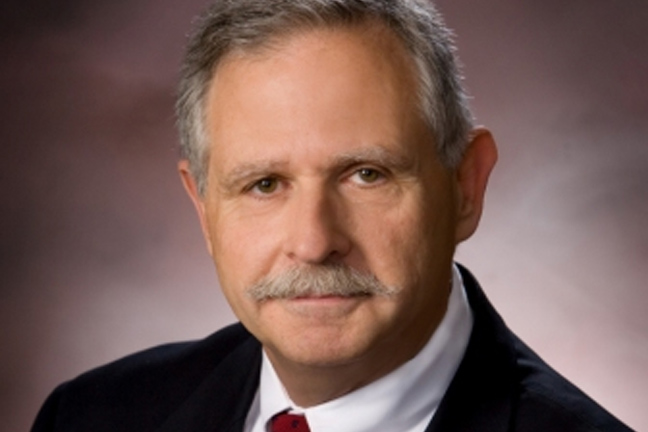
Agricultural News
Confined Production May Be Needed for Herd Expansion
Wed, 11 Feb 2015 16:27:05 CST
 The nations' cattle producers are responding to the strong economic signals in rebuilding the nation's cow herd numbers. The latest cattle inventory report from the U.S. Department of Agriculture shows there is some solid growth already, but more numbers will be needed. Rabo AgriFinance Senior Analyst Don Close said the rate of expansion seen in the 2014 was above his expectations. Radio Oklahoma Network Farm Director Ron Hays interviewed Don Close at the recent Cattle Industry Convention in San Antonio. Click on the LISTENBAR below to listen to the full interview.
The nations' cattle producers are responding to the strong economic signals in rebuilding the nation's cow herd numbers. The latest cattle inventory report from the U.S. Department of Agriculture shows there is some solid growth already, but more numbers will be needed. Rabo AgriFinance Senior Analyst Don Close said the rate of expansion seen in the 2014 was above his expectations. Radio Oklahoma Network Farm Director Ron Hays interviewed Don Close at the recent Cattle Industry Convention in San Antonio. Click on the LISTENBAR below to listen to the full interview.
"The U.S. cow herd must grow if the industry is going to preserve existing infrastructure and regain lost market share," Close said. "In order to for that growth to occur, the beef and cattle community must address main expansion constraints: high capital barriers, declining availability of grazable acres, and aging producers."
The need for grazable acres has gone under the radar when cattle numbers were declining faster than acreage numbers. Now that herd expansion is taking place, Close wonders if grass availability will become a limiting factor. Over the last ten years, pasture availability has declined by 32 million acres, causing producers to weigh options that require less land. According to a new report from Rabobank Food & Agribusiness (FAR) Research and Advisory group. The report, "Outside In: Confined Cow-Calf Production as a Viable Model for Rebuilding the U.S. Cow Herd Numbers" finds that more innovation is paramount to the growth of the U.S. cattle sector.
The report finds that confined production systems present an alternative that replaces high capital requirements with intensified management and labor. The report's economic evaluation shows that two systems-confined calf production in excess feedyard space and in confinement buildings that are typically built in the Corn Belt - are very competitive compared to conventional production models. In looking at this confined production system, Close said there is extra bunk space available right now, especially in the in the Southern Plains region that continues to recover from the severe drought since 2011.
"While the primary method of U.S. calf production will remain the traditional cow-calf grazing model, the benefits of confined and semi-confined programs - primarily increased efficiency from the cow herd and healthier animals - makes them a truly viable and valuable option," Close said. "The ability to adjust the nutritional needs of the cow to the pregnancy/post-calving stage, and the ability to sort cows and adjust feed requirements based on their body condition scores isn't an option with open grazing."
Close notes confined cow-calf production is an avenue to enable young producers entry into the industry. It is also a means in which land-locked Corn Belt row crop producers can expand their revenue stream, allowing young family members to return to the farm.
Now with herd expansion taking place, the cattle industry needs to determine what an ideal cattle herd size is. Close said he recommends a number between 32 and 34 million head. In looking at the beef cow inventory chart, he said that's the numeric number that was set when cattle numbers stabilized and flatten out. With increased efficiencies, heavier carcass weights, the nation may not need that many cattle to produce that quantity of beef. With strong domestic demand and solid export growth, Close said if the U.S. is going to regain market share he thinks we need to push the envelope. With strong returns, there are positive signals to continue to expand the herd. Close said with great economic returns, somebody is going to respond.
WebReadyTM Powered by WireReady® NSI
Top Agricultural News
More Headlines...



















